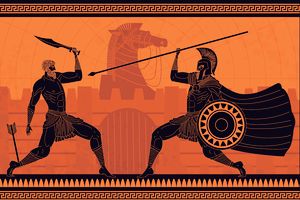


The Mount Ida (Kaz Dagi) rising above the city was home to the first beauty contest, of which candidates were Hera, Athena, and Aphrodite. The son of Dardanus founded the city- later called Troad, and his son, named Ilus, would establish the city of Troy. She would become the wife of Zeus later and would bring Dardanus to the world. The legend tells us that the sea goddess Tethys and the Titan of the Atlantic Sea, Oceanus had a beautiful daughter named Electra.

Archeological excavations are still ongoing, so the ancient city is still visible, and it has a great deal to teach the world. This legendary was turned into a great marketing, and Troy, even back then, became a popular destination for tourism and pilgrimage.Īs Constantinople flourished, the city lost its importance, and many assumed that it was just a mythical place invented by Homer before the self-proclaimed archeologist, Heinrich Schliemann, demonstrated its presence. Named as New (Sacred) Ilium, Romans ruled the area from 85 BCE, and the city had glorious times again thanks to the belief of the Aeneas, one of the heroes of Troia, and considered as the ancestor of Romulus and Remus (the founders of Rome). This visit was rather romantic and more of a personal one where he switched his armor with that of Achilles. After the Trojan War, the city was deserted till 700 BCE when Greeks settled the Troas region.Īlexander the Great (descendant of Achilles), who was on his way to conquer Asia, also stopped by the glorious city to honor the heroes and governed the area around the 4th century BCE. During the heights of the Bronze Age, Troy relished its golden ages when it had the power, also thanks to its location controlling the trade routes.


 0 kommentar(er)
0 kommentar(er)
